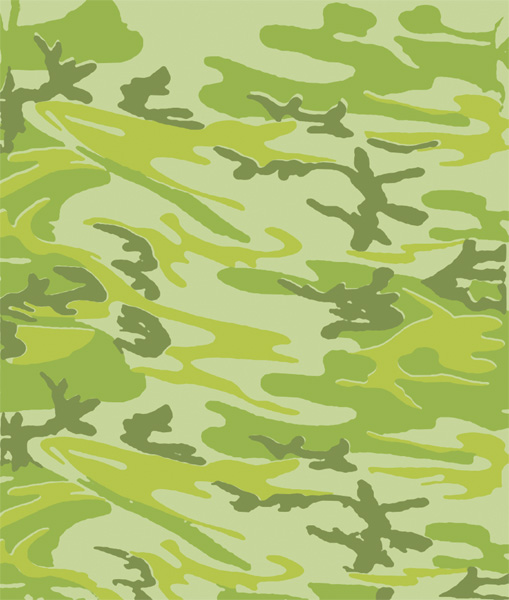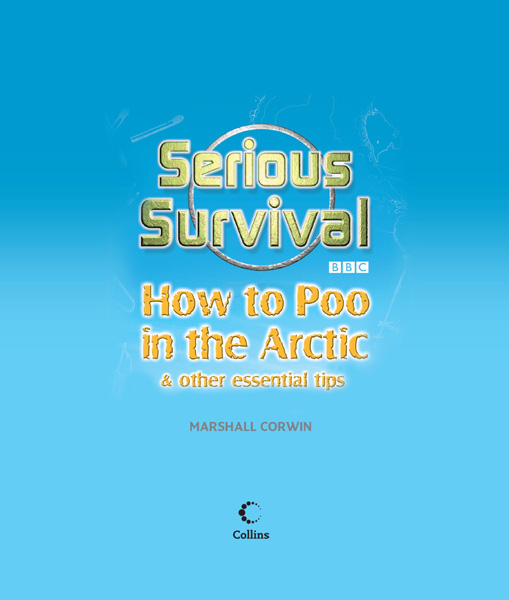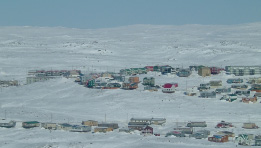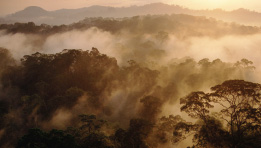
Полная версия
Serious Survival: How to Poo in the Arctic and Other essential tips for explorers




Collins
An imprint of HarperCollinsPublishers Ltd.
1 London Bridge Street
London SE1 9GF
www.harpercollins.co.uk
Collins is a registered trademark of HarperCollins Publishers Ltd.
First published in 2007.
BBC and the BBC logo are trademarks of the British Broadcasting Corporation and are used under licence. © 1996
Text © Marshall Corwin
Photographs © as per credits on p216
The Author asserts the moral right to be identified as the author of this work
A catalogue record for this book is available from the British Library
Marshall Corwin asserts his moral right to be identified as the author of this work. All rights reserved under International and Pan-American Copyright Conventions. By payment of the required fees, you have been granted the nonexclusive, nontransferable right to access and read the text of this ebook on-screen. No part of this text may be reproduced, transmitted, downloaded, decompiled, reverse-engineered, or stored in or introduced into any information storage and retrieval system, in any form or by any means, whether electronic or mechanical, now known or hereinafter invented, without the express written permission of HarperCollins ebooks
HarperCollinsPublishers has made every reasonable effort to ensure that any picture content and written content in this ebook has been included or removed in accordance with the contractual and technological constraints in operation at the time of publication
Source ISBN: 9780007262007
Ebook Edition © JANUARY 2017 ISBN: 9780007584567
Version: 2017-01-24
DEDICATION
For Bella and Luca
CONTENTS
Cover
Title Page
Copyright
Dedication
Foreword
Preparing for the Wild
Safety
Essential Kit

Serious Arctic
The Serious Arctic Adventure
Arctic Wildlife
Frostbite
Hypothermia
Arctic Clothing
The Frozen Ocean
Sled Dogs
Food and Water
Working in the Arctic
Tents and Igloos
Sleeping in the freezer
Arctic Toilets
Extreme Arctic Weather
Inuit Survival

Serious Jungle
The Serious Jungle Adventure
Borneo Wildlife
Dangerous Creatures
Staying Healthy
Jungle Clothing
Travelling through the Jungle
Drinking Water
Rainforest Camps
Sleeping in the Jungle

Serious Andes
The Serious Andes Adventure
Andean Wildlife
Into Thin Air
Extreme Mountain Weather
Climbing Mountains
Glaciers and Snow
Mountain Camps
Andean Horses
Mountain Peoples

Serious Desert
The Serious Desert Adventure
Desert Wildlife
Desert Clothing
Camels
Crossing the Desert
Water, Water!
Animal Tracking
Desert Peoples

Serious Amazon
The Serious Amazon Adventure
Amazon Wildlife
What Lurks Beneath
Emergency Survival
Dugout Canoes
Crossing Rivers
Amazon Tribes
Index
Acknowledgements
About the Publisher
Foreword
In our modern culture we no longer have a formal rite of passage for young people into adulthood. No way for them to prove themselves to their peers and elders. We have fewer physical challenges for them to complete. We make their lives easier in many ways. We sterilise their environment, wrap them in health and safety bandages and are paranoid about them ever being alone. To me this is a shame.
I have rarely been so impressed with a group of people as I have with the two teams of kids that I took away on the first two Serious expeditions. I also know that my great friend Ben Major, who has led every Serious trip since, feels similarly. In both of my expeditions I put the groups of young people into situations that would have made most adults balk. Yes, we had some tears – plenty at times – and we had numerous problems which often seemed insurmountable, but in every case the young teams overcame immense difficulties and came out the other side shining.
Expeditions aren’t so much about learning new skills and processes, but more about learning about yourself and those around you in your team. A great way to do that is to be placed into a situation you’ve never dealt with before. On the Serious adventures, each expedition member pushed their physical and mental boundaries far beyond what they had ever considered possible. They all found some extra reserve of strength, stamina and fortitude that they never knew they had. And of course, the beauty is that they now know that extra something is there, residing within them, if they ever need it again. They’ve all been given a great gift.
When all their friends run for cover on the station platform because the storm comes in, they can stand it out if they so desire, because they know it’s only rain and nothing could be as bad as the week of solid rain in the jungle when they had to look after themselves, try and light a fire, cook, trek through muddy paths and streams and more, just to go to work for the day. A better understanding of their personal comfort threshold in youth has awarded them a lifetime of self-confidence.
To my mind we are all capable of such achievement. It’s known that even the least likely of characters, in a survival situation, can be capable of great feats of bravery, physical prowess and mental agility. This book reflects the philosophy of the series, namely that expeditions can be for everyone. Not just the realm of specialist climbers, macho explorers. I applaud all those great young people who took part in the Serious expeditions. They have inspired innumerable adults and children to get out there and push themselves in some way. I hope this book inspires you to do the same.
Bruce Parry
Ibiza 2007

Bruce in the Namib during filming of Serious Desert. He also led the very first Serious expedition to the Borneo jungle.
PUBLISHER’S NOTE
The environments described in this book are extremely hostile and dangerous. The information and suggestions given are of necessity basic pointers which are no substitute for experience, and no trips to extreme environments should be undertaken without appropriate training and advice from professional guides and survival experts. Accordingly, the author and publishers cannot accept responsibility for any prosecutions or proceedings brought or instituted against any person or body as a result of the use or misuse of any techniques described or any loss, injury or damage caused thereby. In practising and perfecting these survival techniques the rights of landowners and all relevant laws protecting certain species of animals and plants must be regarded as paramount.
Preparing for the Wild
SERIOUS ADVENTURE

Adventure has always been central to the human spirit. Throughout history people have bravely headed into uncharted territory in search of new horizons; sometimes simply finding food and shelter has meant a battle of wits against all the natural world has to offer. But as our standard of living soars beyond the wildest dreams of our ancestors we are gradually losing touch with our adventurous side – and we’re all the poorer for it.
For the past five years the BBC TV Serious Adventure series has tried to redress the balance, taking teams of young adventurers to some of the most hostile and remote environments on earth. The twelve- to fifteen-year-olds have quite literally gone to extremes to help the planet – not only coping with conditions that would challenge many an adult explorer, but also completing major environmental projects to benefit key endangered species such as orang-utans and polar bears.
For the participants the expeditions have been life-changing, opening their eyes to a whole new world way beyond their day-to-day experiences back home. The trips have also demonstrated that with the right preparations and attitude most people are capable of achieving far more than they might first think.

ALL IN THE MIND
It can’t be emphasised enough that the key to heading outside your ‘comfort zone’ into harsh environments is mental attitude. Yes, basic fitness is important, preparation is fundamental and expert assistance is often vital, but time and again a ‘can-do’ positive outlook has been proven to make all the difference in the world.
It’s not about revelling in being uncomfortable, dirty and tired – most adventurers love their luxury hotel just like the next person. It’s the deep satisfaction of pushing yourself to new limits and experiencing all that life has to offer.
And at the end of a tough expedition you’ll appreciate that five star hotel all the more – even if the hotel receptionists show slightly less appreciation of the filthy, bedraggled individuals lowering the tone of their lobby.
FITNESS
A basic level of fitness is essential for most expeditions – walking any distance with a rucksack at altitude or in the heat of a jungle is debilitating at the best of times, and is certainly no fun if you’re really unfit. Plan an exercise programme that gradually increases in intensity (and if you’re not used to exercise talk through your proposed programme with your doctor or a fitness expert).
For stamina, half-hour walks and short jogs at least three times a week should build to longer hikes of several hours as you get closer to the trip. Carry a rucksack and use the boots you’ll be using on the expedition to wear them in. Regular gym sessions will also improve your strength.
Having said that, it’s important to keep things in perspective and not become obsessed – only the most extreme challenges, such as attempting a Himalayan peak or walking to the North or South Pole, require superhuman fitness.
Once on location experiencing the outdoor life, your stamina will increase further day by day. With luck you’ll be absolutely glowing with health by the time you return.
ADVENTURE WITH A PURPOSE
All Serious Adventure trips have an environmental goal, and you might want to look at whether you can also add this extra dimension to your trip. It can be extremely satisfying knowing you are helping the environment, and it may also help you through any difficult times when tough conditions threaten to get the better of you.
Many trekking and expedition companies offer such opportunities, and various animal groups are on the lookout for volunteers to help with projects in the field. Even if you don’t take part formally, they may be interested in information gathered about sightings of endangered creatures.
Everything you do on expedition should of course be planned with the maximum respect – and minimum disturbance – for the environment, animals and local people. As the old maxim says: Take nothing but photographs, leave nothing but footprints.
PROTECTION AGAINST DISEASE
a) Inoculations
Most extreme locations require a range of inoculations to protect against diseases such as typhoid, yellow fever and hepatitis A & B (to name but a few). Your doctor or a travel clinic will be able to advise as to what is needed for the particular area you intend to visit. Get onto this early as some diseases need a course of inoculations over a period of a month or more before departure.
The inoculations required will also depend on the immunisations you were given as a young child and whether these are still ‘in date’.
b) Malaria tablets
Many locations need protection against malaria. Anti-malaria drugs are usually taken as a course of tablets beginning before the expedition and continuing until well after the trip has ended. The exact drugs recommended will depend on the type of malaria found in the area visited (see also Staying Healthy).
Safety

It’s always hard to assess the true risk of an expedition in an extreme environment. As you start to list the potential hazards, the trip can quickly begin to look like a complete nightmare that nobody in their right mind should undertake. The trick is highlighting the dangers without overplaying the risks. (It’s often said, with some statistical justification, that the most dangerous parts of an extreme expedition are actually the journeys to and from the airport.)
A way to get the risks in perspective is to imagine how dangerous, say, remote Amazon tribespeople would find our day-to-day life in ‘civilisation’. Never having seen traffic before their chances of safely crossing a busy road would be extremely low.
To ensure survival they would clearly need to key into advice and expertise from local people, which is exactly what anyone planning a trip to their environment should also be doing.
MANAGING RISK
Everything is risky. For example, many people break their leg before even leaving the house by tripping over the doorstep. The aim during an expedition is to reduce the risks to an acceptably low level. There are various things to help achieve this:
• Careful planning in advance of the trip is essential, taking into account all the worst case scenarios and the actions that will be taken should the worst actually happen.
• Critical to this ‘risk assessment’ is an evacuation plan, listing how you would get someone to a suitably equipped, first-class hospital at any point on the expedition and how long it would take. If in the territory of dangerous snakes, for example, you will generally need to ensure that you are no more than four hours from a hospital with anti-venom.
• Local expert guides are indispensable.
• Fully charged satellite phones should be carried by key members of the expedition at all times, along with GPS satellite handsets to pinpoint location. Don’t forget spare batteries.
• A number of two way VHF radios (walkie talkies) may greatly help communication between key expedition members.
• If going to very remote areas consider taking an EPIRB (Emergency Position-Indicating Radio Beacon), which will transmit your position to the rescue services in case of dire emergency.
• Employ the buddy system, in which expedition members are paired up for the duration of the trip. The aim is that each looks out for the other at all times: they should always know where their ‘buddy’ is to ensure they don’t get lost. The pair should regularly inspect each other to check for frostbite, leeches, rashes and so on.
• Each member of the expedition should carry their emergency kit at all times (see Essential Kit).
• A medic should ideally accompany the expedition with full emergency medical kit to stabilise casualties. If this is not possible, ensure at least one member of the party is trained in first aid, and bring a medical kit appropriate to the region as advised by a good travel clinic.
• Take out full medical and evacuation insurance to cover local hospital treatment and repatriation.
• Check out travel advice for the country you are travelling to on the Foreign and Commonwealth Office website at www.fco.gov.uk
EMERGENCY NUMBERS
Fill in this checklist (where relevant) before you go, to make sure you have all the necessary numbers in case of an emergency.
Nearest embassy or consulate
Local helicopter/plane evacuation
Insurance company for evacuation/medical emergency
Local hospital
Emergency mobile
Telemedicine service
Expedition Satellite Phones
Local charity partner
UK emergency contacts
EPIRB (Emergency Position-Indicating Radio Beacon)


Safety training exercises during the Serious Amazon expedition
IN AN EMERGENCY
Before going on a trip, make your own emergency card reminding you of what to do should anything go wrong. The Serious Expedition team emergency card read as follows:
Lost or Separated?
Don’t Panic
Conserve/Ration Water & Food
S.O.S. Signal (noise or light):
3 short + 3 long + 3 short
OR 6 blasts/bangs/light per minute
(Reply – 3 blasts)
DO NOT MOVE LOCATION
We will find you
STAY COOL
STAY POSITIVE


HOW DO YOU avoid jet-lag travelling across the world?
Jet-lag is caused by travelling across time zones, which messes up your internal body clock, disrupts sleep patterns and leaves you exhausted. It can’t be avoided and its effects are exacerbated by arrival in a hot, humid environment, so it’s wise to do all you can to minimise the effects.
At the start of the journey it often helps to set your watch to the local time at your destination and eat and sleep accordingly. Even if you can’t actually sleep on a plane, cat naps will pay dividends.
Don’t go charging off on expedition the moment you arrive. If possible allow several very light days on arrival to recover from jet-lag and to acclimatise.
TRAVEL TIPS
• Long plane journeys leave you dehydrated. Drink lots of water, avoid alcohol, and get up regularly and walk around the cabin.
• The journey from the airport is potentially one of the most dangerous things you’ll do all trip. Invest in reliable, safe transport from the airport with a reputable company (colourful local forms of transport such as three-wheeler motorbike taxis can be death-traps).
• As soon as you arrive in a tropical country drink only purified water. That means avoiding drinking or brushing your teeth in tapwater, and being meticulous about not eating anything that may have been washed in tapwater, for example delicious-looking salads. Particularly tempting in a hot environment is to have ice cubes in your drinks, but sadly you should refuse unless you know for sure that the ice has been made from filtered water.
• Always clean your hands before eating, using alcohol gel rather than the local water.
• Don’t eat any food, especially meat, unless you are sure it has just been cooked. Give the mouthwatering platter of cold meats a miss – how long has it been sitting there?
• Don’t automatically trust the global hotel chains. Their hygiene standards may be woefully short of their counterparts in more developed countries. Many is the time folk have successfully completed the most extreme trip, only to get food poisoning at the last minute after celebrating with a blowout at a ‘luxury’ hotel before their flight out.
• Do your research into local customs. For example, will taking photos of local people offend them? Learning a few basic words such as ‘hello’ and ‘thank you’ in the local language will go a long way.
• Work out a secure way of carrying your money, tickets and passport, such as a waist belt (or ‘bum bag’) which fastens securely and can be hidden beneath loose clothing.
• Keep a photocopy of your key passport pages separate to your passport, along with numbers for your nearest Embassy or Consulate in case of emergency.

Essential Kit

Carrying on your back all you need to live in an extreme environment can give you an enormous sense of freedom, but it can also be quite a pain for a number of reasons:



